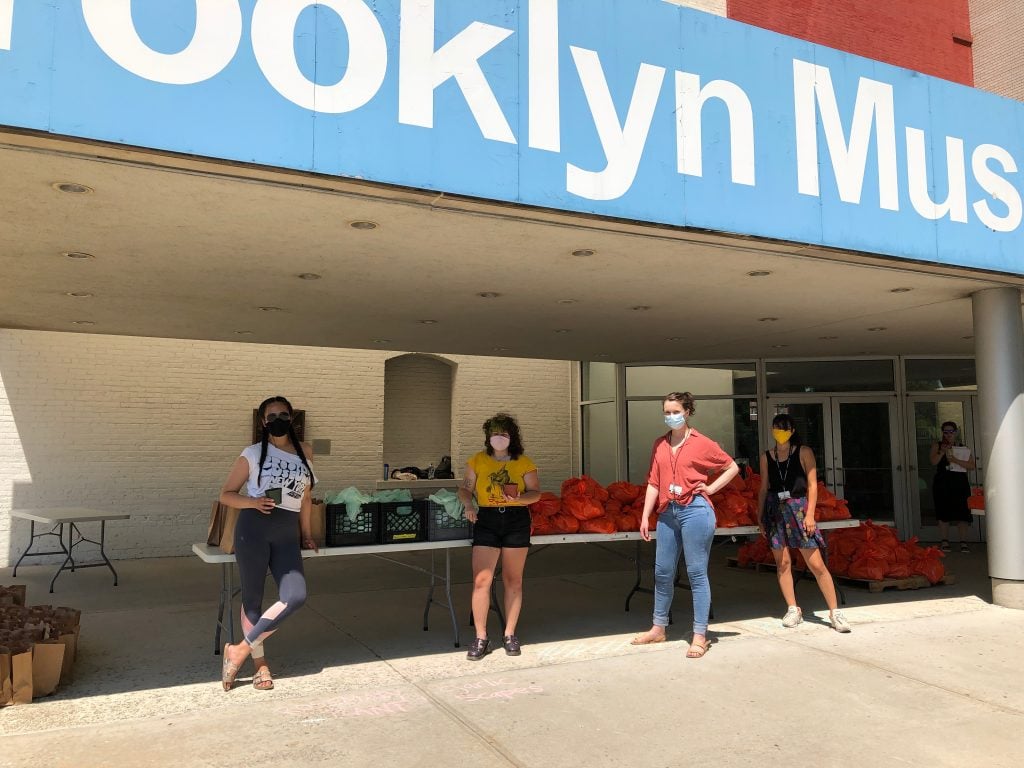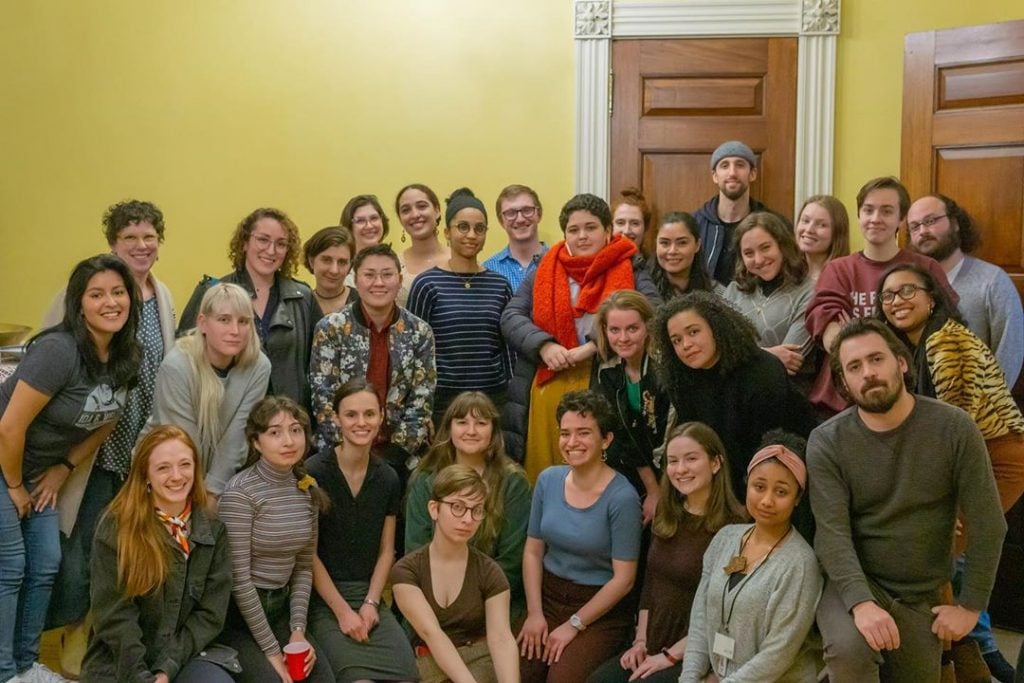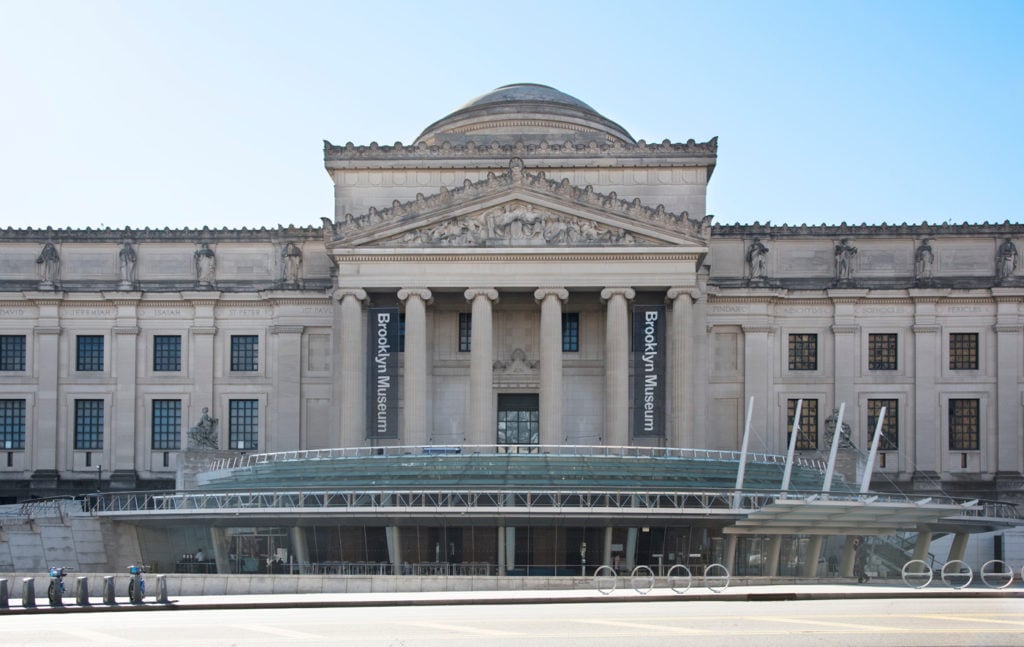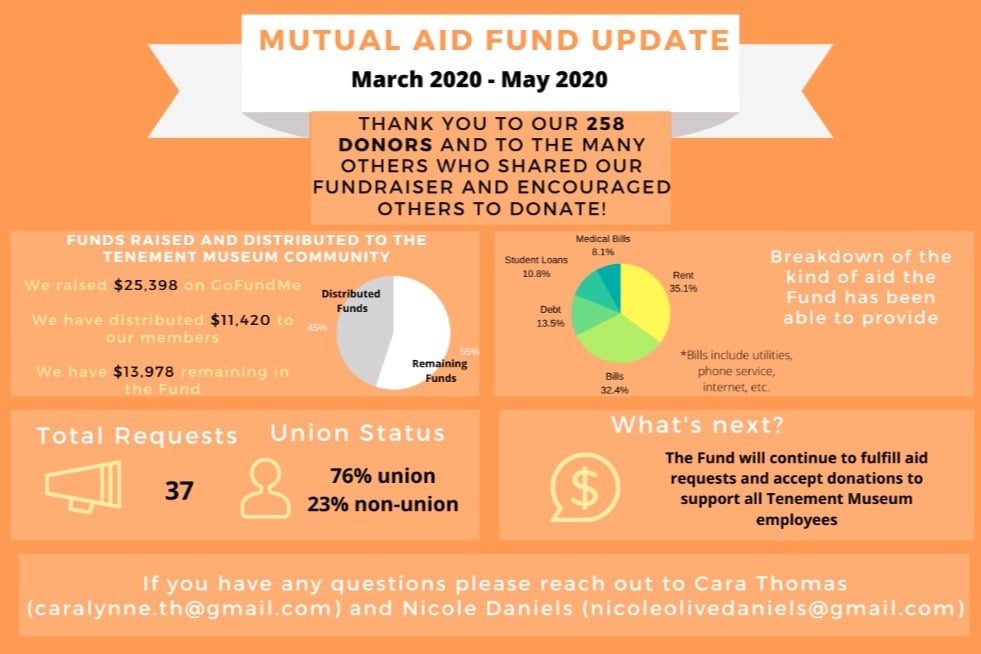Art World
How Museum Workers Are Rallying to Launch Mutual-Aid Funds in Support of Colleagues Who Have Lost Their Jobs
The need for grassroots mutual-aid funds illustrates deep structural problems in the arts field.

The need for grassroots mutual-aid funds illustrates deep structural problems in the arts field.

Sarah Cascone

After US museums shuttered indefinitely in March, with revenue disappearing overnight, many institutions began making layoffs and furloughs, leaving more than 15,000 people at New York City arts nonprofits suddenly out of work.
Most of these cuts were made to the lowest-paid employees: front-of-house workers and part-time staff.
To help those hardest hit, workers from some museums have banded together to start mutual-aid funds.
The Tenement Museum Union in New York started its fund on March 24, with organizers Cara-Lynne Thomas and Nicole Daniels quickly raising over $25,000 to support furloughed staff.
“While we wish such funds weren’t needed, we’re glad to see these internal worker-led initiatives,” Daniels said in an email to Artnet News.
Inspired by that example, two current and two former employees of the Brooklyn Museum followed suit on July 2, bringing in over $64,000 to assist current and former employees.

The Tenement Museum Union. Photo courtesy of the Tenement Museum Union.
And it isn’t just individual museums. The activist collective Museum Workers Speak launched the Museum Workers Relief Fund on May 5, and has raised over $56,000, doling out $500 payments to laid off or furloughed US museum employees.
At the Tenement Museum, where workers had unionized last year and were in the midst of negotiating their first contract, the job cuts came early. The Lower East Side institution’s educators—roughly 70 part-time workers who lead guided tours for all visitors—were told on March 13 that they would only be paid through March 20. Thirty full-time staff members were furloughed, and 13 employees were laid off entirely.
Thomas, members of the Tenement Museum Union Bargaining Committee, and Daniels, a union member, were quick to respond with their mutual-aid fund’s GoFundMe project.
The initiative is inspired in part by some of the museum’s historic residents, who were known to have supported fellow immigrants from their communities in times of hardship through landsmanschaftn, or mutual-aid societies.
“These layoffs further highlight the importance of community support systems like mutual-aid funds, as well as inequities museum workers can face within their organizations,” Thomas told Artnet News in an email.
The Brooklyn Museum held out longer before making cuts, but laid off 26 full-time and three part-time employees on June 29. Three days later, the museum’s mutual aid GoFundMe was live.
“We were inspired by the mutual–aid efforts that we have been a part of in our communities, and especially the work of the Tenement Museum Union. We saw a real and urgent need for our colleagues, and worked together to build up support independent from the institution,” the organizers, who wish to remain anonymous, said in a statement to Artnet News.

The Museum of Contemporary Art Los Angeles Union. Photo courtesy of the Museum of Contemporary Art Los Angeles Union.
“The response has been overwhelming and uplifting,” they added. “Up to this point, we’ve been able to support nearly 100 current, furloughed, and laid off colleagues who are facing financial hardship.”
Among the fund’s nearly 300 donors to date are museum director Anne Pasternak, who gave $1,500; her predecessor, Arnold Lehman; and the museum’s president and COO, David Berliner, who both gave $1,000.
Barbara Vogestein, the chair of the board, contributed $4,000 for the largest single donation.
“I wanted to show my support for members of our Brooklyn Museum community, both those who were laid off and those who stepped up to provide a means of assistance,” contemporary art curator Eugenie Tsai, who gave $1,000, told Artnet News in an email. “Given the economic fallout from the pandemic, it’s the worst possible time to suddenly find yourself without a source of income. How are you going to pay the rent and buy groceries?”

Exterior of the Brooklyn Museum (2018). Courtesy Brooklyn Museum. Photo by Jonathan Dorado
At the Tenement Museum, management has been less openly supportive of mutual aid. Only one senior staff member is listed among the fund’s donors: Alisa Martin, the vice president of educational operations, who gave $100.
The museum did not respond to inquiries from Artnet News.
The union’s initial goal for mutual aid was just $10,000, but contributions nearly doubled that in the first 24 hours. The fund has since raised over $25,000. (By comparison, the museum’s own fundraising efforts to support the institution on Give Lively, a fundraising platform for nonprofits, has raised over $416,000, in addition to two Facebook fundraisers raising over $30,000 and $2,500.)
The union fund is being used to help museum employees, including those not in the union, pay their bills. The money is being paid directly to landlords, student-loan owners, and other creditors, with the fund promising to contribute at least in part to all staff requests for assistance.

Statistics about the Tenement Museum Union Mutual Aid Fund. Image courtesy of the Tenement Museum Union.
“As of this week, we’ve distributed over $15,000. We have not placed any cap on the amount of money we distribute per request, and they range from $40 to $1,500,” Daniels told Artnet News.
(As of June 10, the Tenement Museum Union has ceased fundraising and instead offers a list of causes related to the Black Lives Matter movement to which interested parties can give instead.)
In Los Angeles, the recently unionized staff of the Museum of Contemporary Art—which laid off all 97 of its part-time employees in March—launched a mutual aid GoFundMe that has so far raised $9,000 of its $50,000 goal since March 30. The initiative intends to give each laid off worker at least $500.
Despite their success, the hardships funds illustrate a structural problem in the arts field.
“It’s shameful that museum workers need to dig into their own pockets to help those laid off, while the top three earners at the Brooklyn Museum have combined salaries that total over $1 million each year,” a spokesperson for Art and Museum Transparency, an art workers’ collective, told Artnet News.
But mutual aid efforts are also a sign of hope for workers in the cultural sector who have been hard-hit by the financial impact of the global health crisis.
“We can see how solidarity enables us to help each other out, whether that’s in the face of housing and food insecurity, health care needs, or ongoing or unexpected bills during this time of crisis,” said the Brooklyn Museum mutual aid organizers.